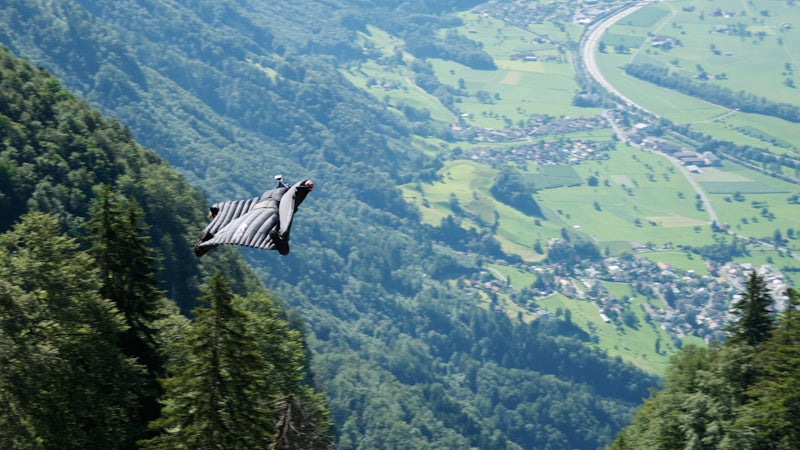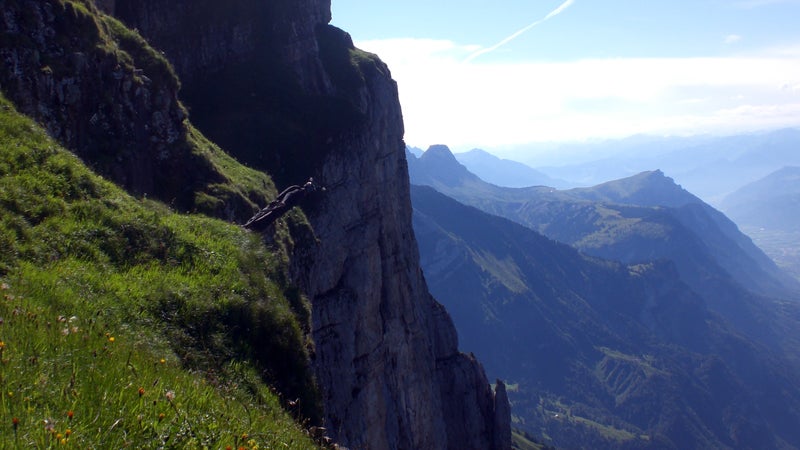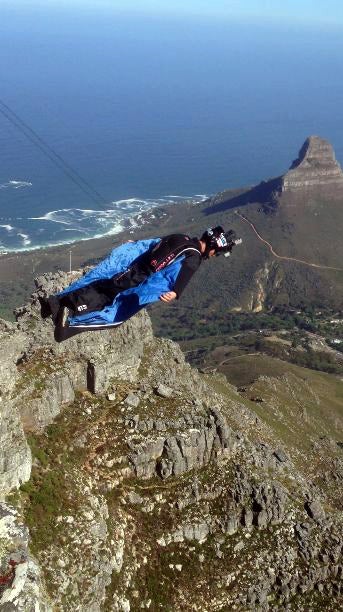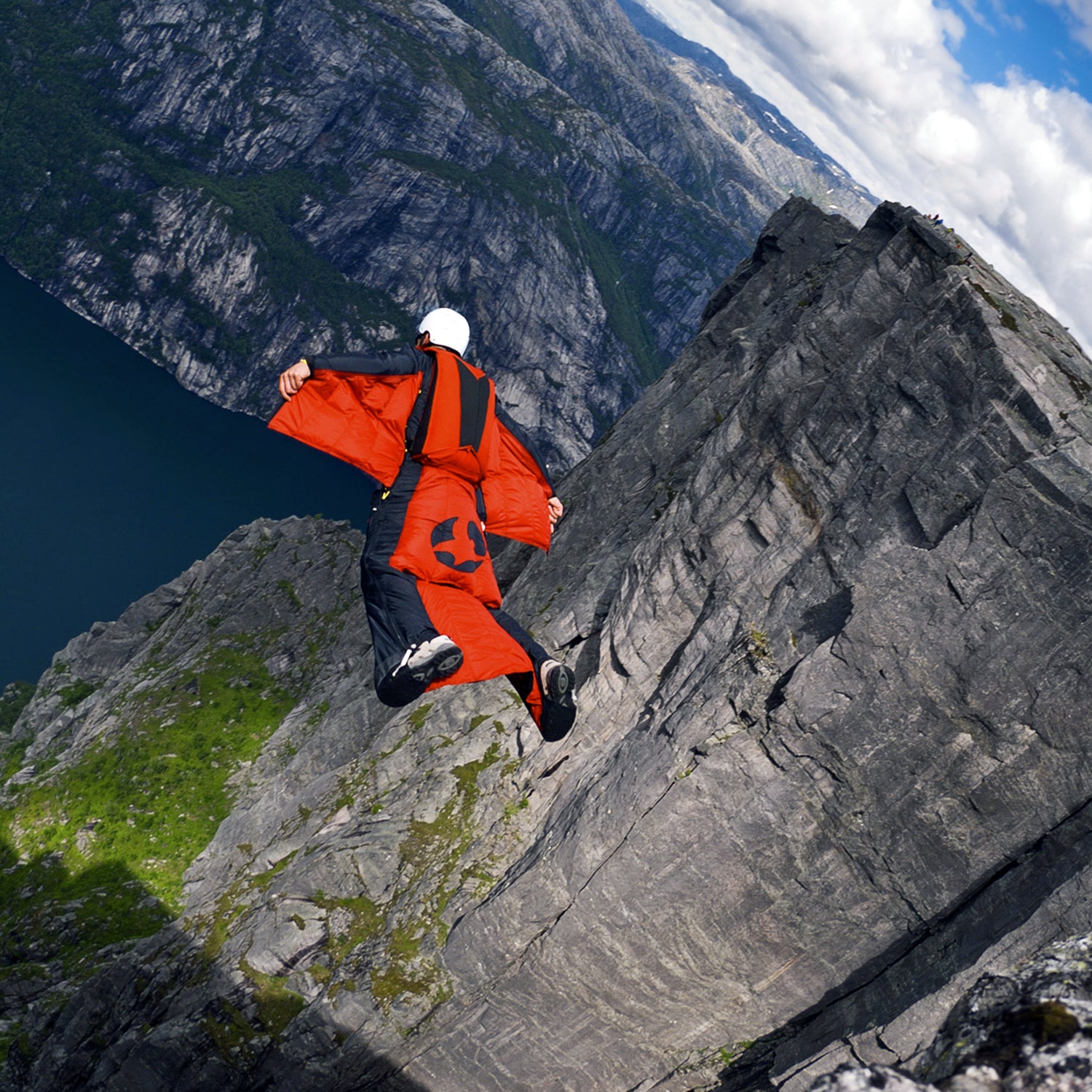Crazy Adrenaline Junkie. I heard this label a lot as a bomb technician returning from Iraq, and movies like The Hurt Locker only reinforce the stereotype. It is dangerous work, true, but the characterization is generally unfair, especially compared to the exploits in Matt Higgins’ new book, . Next to BASE jumping and wingsuit piloting, bomb defusing work can look as risky as knitting.
Bird Dream is about the techniques and history and tragedies of the sport, culminating with the 2012 race between Jeb Corliss, the famous American with a bevy of endorsements, and Gary Connery, the British out-of-work stuntman without two quid to rub together, to be the first man to land without a parachute. Recently Higgins and I spoke about what drives these men and women.
OUTSIDE: You take great pains to explain that BASE jumpers and wingsuit pilots are calculating and not crazy. The rest of the book provides a mountain of evidence that challenges this claim. Do you come down on one side?
HIGGINS: I’ve made a conscious decision to give BASE jumpers and wingsuit pilots the benefit of the doubt, as far craziness is concerned. I talked to psychologists and read research from geneticists and neuroscientists, and determined that, no, people who take tremendous risks are not necessarily nuts. There’s a genetic component to risk-taking, so wingsuit pilots and BASE jumpers are likely born with a predisposition for dangerous thrills.

But even with this genetic predisposition, the risk tolerance of the elite pilots really varies. Jeb calls Gary’s plan to land in a pile of boxes “crazy.”
There’s a big difference between “crazy” in the colloquial sense, and in the clinical sense of the word. When we see something spectacular, or that defies our understanding, we’re liable to call it crazy.
So I don’t believe Jeb thought Gary was crazy in a clinical sense, although he didn’t know Gary personally, and it was always possible that Gary was one of those rare, slightly unhinged folks who doesn’t care if he’s injured or killed. Jeb was probably having a hard time wrapping his head around how Gary planned to do something that Jeb had devoted a lot of thought to, and dismissed for himself as too dangerous.
In the BASE jumping and wingsuit culture, how much does a sense of competition, or a need to be famous, factor in?
Certainly there’s a kind of drive, but we’re talking about more of an internal competition, to test one’s capabilities and see how far one can go. There have been few opportunities for actual competition. Recently there have been some wingsuit races created, and these events appeal to a small segment of pilots, usually the elite. Yet Jeb, who is certainly one of the elite pilots, has no interest in traditional sports and avers that he’s not competitive. Gary has a competitive temperament; he was a competitive downhill skier and he takes part in grueling distance runs.

Gary was a paratrooper in the UK Army, where he learned to jump. Is the sport full of ex-military guys?
I know that many skydivers and BASE jumpers have come from the military, but it’s worth noting that Gary clashed with the prevailing culture and his superiors. It was a BASE jump that finally precipitated his leaving the paratroops. I assume that if you’re so single-minded that you’re willing to attempt a wingsuit landing without a parachute, chances are you’re probably too individualistic to thrive in the military.
The group that I was embedded with mostly came from civilian backgrounds. What bound them was that they all had achieved a high level of performance in another extreme or adventure sport. Jeb is an accomplished scuba diver. There were several skiers, racers, and backcountry specialists. One wingsuit pilot was a motocross racer. Joby Ogwyn is a high-altitude climber, and was the youngest to reach the world’s Seven Summits. Roberta Mancino is a blackbelt in kickboxing and a champion skydiver. There were several experienced surfers. They all brought skills and a mindset honed in these other disciplines to bear as BASE jumpers and wingsuit pilots.

BASE jumping’s motto is “The only way to not die BASE jumping is to not BASE jump.” This reminds me of our motto in the bomb squad, “Initial Success or Total Failure,” but even more fatalistic.
The motto remains. There are no guarantees, and unless you’re prepared for the possibility of giving your life, don’t do it. I heard that over and over again. Fatalities still occur regularly. There are more than 200 recorded deaths on the BASE Fatality List, which is not even a comprehensive accounting. In 2013, there were a record 22 confirmed wingsuit pilots killed — that’s BASE and skydiving. And so far this year I can think of four more wingsuit deaths, and these men were among the most experienced and talented fliers in the world.
Since the first and only successful landing, the wingsuit landing craze has generally faded. In the future, will we look back at this little era and wonder what people were thinking?
My editor suggested that there’s something about the zeitgeist — a possible combination of economic prosperity, a rise of technology, and maybe anxiety about the outcome of world affairs — that will help explain the era in the book to future generations. I think of the 1960s counterculture, and having grown up with skateboarding, BMX freestyle, and snowboarding, I saw the X Games as my generation getting its Woodstock. BASE jumping and wingsuit flying just takes it to a further extreme.
Brian Castner is the author of “The Long Walk.” Follow him on Twitter at .


